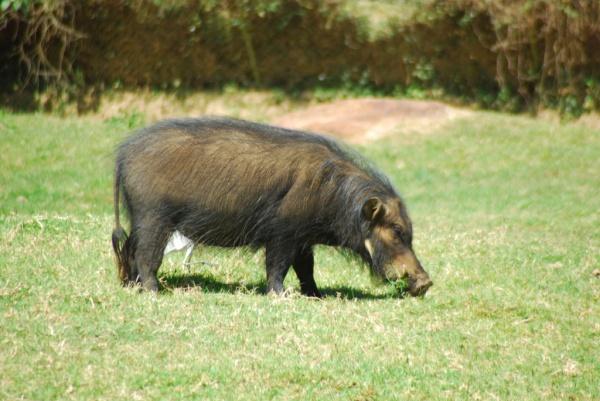Facts About (Giant) Forest Hog
The giant forest hog, the largest wild member of the pig family Suidae, inhabits the wooded habitats of Africa. Despite its impressive size and broad distribution, it was only officially identified in 1904. These hogs typically range in length from 1.3 to 2.1 meters and can weigh anywhere from 100 to 275 kilograms. Females tend to be smaller, averaging around 167 kilograms, while males usually weigh about 210 kilograms. Characterized by their distinctive black fur interspersed with orange hairs near the skin, large pointed ears, and tusks that are smaller than those of warthogs yet larger than those of bushpigs, these animals are quite unique.
Giant forest hogs are primarily found in the forests of West and Central Africa, particularly within the Guinean and Congolese regions. Some populations also thrive in humid highlands and mountainous areas. Their preferred habitats include forest-grassland mosaics and wooded savannas, while they avoid arid zones. Although their diet is predominantly herbivorous, they do scavenge occasionally. Generally nocturnal, these hogs may also be active during the day in certain areas. They live in herds of up to 20 individuals, usually consisting of females, their young, and an older male.
While giant forest hogs have not been domesticated, they can be tamed and may potentially be domesticated in the future. In the wild, they are known for their aggressive behavior, especially males who fiercely protect their group. They are capable of defending themselves against predators such as leopards and hyenas, and sometimes these encounters can be fatal. Although lions may prey on giant forest hogs in some regions, their habitats do not often overlap, making such interactions rare.

 Ivory Coast
Ivory Coast